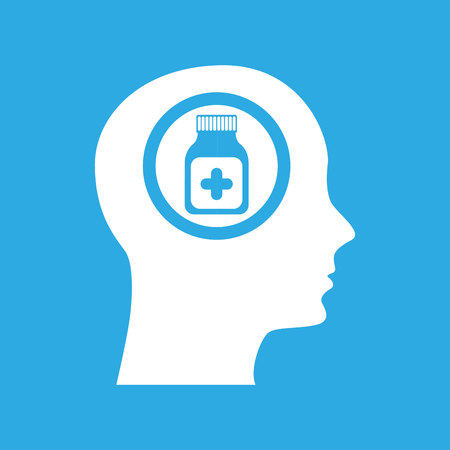1. Understanding the Link Between Mental Health and Substance Abuse
The Connection Between Mental Health and Substance Use Disorders
In American rehabilitation centers, its common to see people facing both mental health challenges and substance use problems at the same time. This is known as having co-occurring disorders or dual diagnosis. For example, someone struggling with depression might turn to alcohol or drugs to cope, while regular substance use can also increase the risk of developing anxiety or mood disorders. Research shows that nearly half of those with a substance use disorder also have a mental health disorder in the United States.
Why Addressing Both Is Crucial for Recovery
Treating just one problem without considering the other often leads to poor outcomes. If someone gets help for addiction but not for their depression or PTSD, they may relapse because the root cause of their substance use hasn’t been addressed. Likewise, treating only the mental health issue without tackling substance abuse can make it harder for someone to manage their symptoms and stay healthy.
Common Co-Occurring Disorders in U.S. Rehabilitation Centers
| Mental Health Disorder | Commonly Associated Substance |
|---|---|
| Depression | Alcohol, prescription painkillers |
| Anxiety Disorders | Benzodiazepines, marijuana |
| Post-Traumatic Stress Disorder (PTSD) | Alcohol, opioids |
| Bipolar Disorder | Cocaine, alcohol |
| Schizophrenia | Tobacco, cannabis |
The Importance of Integrated Treatment Approaches
American rehab centers are increasingly using integrated treatment strategies that address both mental health and substance abuse together. This means professionals from both fields work as a team to create a plan tailored to each person’s unique needs. By treating both issues at the same time, individuals have a better chance at long-term recovery and a healthier future.
2. Evidence-Based Integrated Treatment Approaches
In American rehabilitation centers, using evidence-based models is essential for successfully treating individuals who experience both mental health challenges and substance use disorders. These approaches are designed to address the complex, interconnected needs of clients, helping them achieve lasting recovery and improved quality of life.
Integrated Dual Diagnosis Treatment
Dual diagnosis means a person is dealing with both a mental health disorder (like depression or anxiety) and a substance use problem at the same time. In the past, these issues were often treated separately. However, research shows that integrated treatment—where both conditions are addressed together—is much more effective. This model involves:
- Collaborative Care Teams: Mental health professionals, addiction counselors, social workers, and medical staff work closely together to create a unified treatment plan.
- Personalized Treatment Plans: Each client’s therapy is tailored to their unique combination of mental health and substance use needs.
- Coordinated Services: Both medication management and therapy sessions are coordinated so clients receive consistent support.
Key Features of Integrated Dual Diagnosis Treatment
| Feature | Description |
|---|---|
| Team-Based Care | Multiple specialists collaborate to address all aspects of recovery. |
| Continuous Assessment | Treatment plans are regularly updated based on progress and changing needs. |
| Psychoeducation | Clients learn about both their mental health condition and substance use disorder for better self-management. |
| Family Involvement | Families are educated and included in the recovery process whenever possible. |
Trauma-Informed Care
Many people struggling with addiction have also experienced trauma, such as abuse or significant loss. Trauma-informed care recognizes how trauma can impact a persons mental health and behaviors related to substance use. This approach emphasizes safety, trust, and empowerment throughout the rehab process by:
- Creating Safe Environments: Ensuring clients feel physically and emotionally safe during treatment.
- Sensitive Communication: Staff are trained to communicate with compassion, avoiding triggers that could re-traumatize clients.
- Empowerment and Choice: Clients have a voice in their treatment goals and methods, helping them regain control over their lives.
- Cultural Sensitivity: Acknowledging each client’s background and personal history when planning care.
Main Elements of Trauma-Informed Care in Rehab Centers
| Main Element | Description |
|---|---|
| Safety First | The environment is welcoming and free from judgment or harm. |
| Trustworthiness & Transparency | Treatment processes are clear, open, and honest with clients. |
| Peer Support & Collaboration | Clients are encouraged to build supportive relationships with peers and staff. |
| Cultural Competence | Cultural backgrounds are respected in all aspects of care. |
The Importance of Combining Approaches
No single method works for everyone. That’s why leading American rehab centers often blend integrated dual diagnosis treatment with trauma-informed care. By doing so, they ensure that every aspect of a client’s experience—from emotional well-being to physical safety—is supported throughout their recovery journey. This holistic strategy helps individuals build resilience, develop healthier coping skills, and lay the foundation for long-term success beyond rehab.

3. Building Multidisciplinary Care Teams
Why Collaborative Teams Matter in American Rehab Centers
In the United States, rehabilitation centers are increasingly relying on multidisciplinary care teams to address both mental health and substance abuse issues. This team-based approach brings together experts from different fields, ensuring that each patient receives personalized and holistic care. By working collaboratively, these professionals can better understand the complex needs of individuals facing both mental health challenges and addiction.
Key Members of a Multidisciplinary Team
| Role | Primary Responsibilities |
|---|---|
| Mental Health Professionals (e.g., Psychologists, Therapists) | Assess and treat emotional, behavioral, and psychological issues; provide therapy sessions; develop coping strategies with patients. |
| Addiction Specialists | Diagnose substance use disorders; create treatment plans; monitor progress and manage withdrawal symptoms. |
| Social Workers | Help patients navigate social services; provide case management; support families; connect patients to community resources. |
| Peer Recovery Coaches | Offer lived-experience support; mentor patients through recovery; help build motivation and accountability. |
The Benefits of Team-Based Care
- Holistic Approach: Combining expertise ensures that all aspects of a patients well-being are considered—from mental health to social environment.
- Improved Communication: Regular team meetings mean everyone stays updated on the patient’s progress, reducing gaps in care.
- Personalized Support: Each specialist contributes unique insights, allowing for more tailored treatment plans.
- Cultural Competence: Diverse teams are better equipped to understand and respect patients’ backgrounds, which is crucial in Americas multicultural society.
The Role of Peer Recovery Coaches in American Rehab Centers
Peer recovery coaches play a unique role in U.S. rehab settings. Having faced similar struggles themselves, they offer hope and practical advice that only someone with lived experience can give. Their presence helps break down stigma around addiction and mental health, making patients feel understood and supported throughout their journey.
4. Cultural Competence and Patient-Centered Care
Understanding Cultural Competence in Rehabilitation Centers
Cultural competence means that healthcare providers are aware of, respect, and can effectively respond to the cultural and linguistic needs of their patients. In American rehabilitation centers, this is especially important because people from many different backgrounds seek help for mental health and substance use issues. When treatment teams understand a patients culture, beliefs, and values, they can build trust and provide better care.
The Importance of Patient-Centered Care
Patient-centered care focuses on treating each person as an individual with unique experiences, preferences, and needs. This approach is key in American rehab centers, where people come from various racial, ethnic, and social backgrounds. By listening to what matters most to patients and involving them in decisions about their care, providers create a supportive environment that encourages recovery.
Benefits of Culturally Competent and Patient-Centered Care
| Benefit | Description |
|---|---|
| Better Communication | Providers use language and examples that make sense to each patient, reducing misunderstandings. |
| Increased Trust | Patients feel respected and understood, making them more likely to participate in treatment. |
| Improved Outcomes | Treatment plans reflect the patients culture, lifestyle, and values, leading to better results. |
| Reduced Stigma | Sensitive care helps address any shame or fear patients may have about seeking help. |
| Greater Satisfaction | Patients are happier with their care when it aligns with their personal beliefs and preferences. |
Tailoring Treatment Plans for Diverse Populations
Rehabilitation centers across the United States serve patients who speak different languages, practice different religions, and have different family structures. To meet these diverse needs:
- Assessment: Providers ask about cultural background, religious beliefs, family roles, and language preferences during intake.
- Treatment Planning: Teams work together with patients to design individualized treatment plans that honor cultural values.
- Support Services: Centers may offer translation services, culturally relevant support groups, or access to spiritual leaders if needed.
- Continuous Learning: Staff members receive ongoing training in cultural competence to keep improving their skills.
Cultural Awareness in Action: Examples from American Rehab Centers
| Cultural Group | Possible Adaptations in Care |
|---|---|
| Latino/Hispanic Patients | Bilingual staff; inclusion of family in therapy sessions; understanding of traditional healing practices. |
| African American Patients | Addressing community stigma; involving faith-based organizations; recognizing historical mistrust of medical systems. |
| LGBTQ+ Patients | Sensitive intake forms; safe spaces for expression; staff trained in LGBTQ+ issues. |
| Native American Patients | Respect for tribal traditions; inclusion of elders or spiritual advisors; flexible schedules around ceremonies. |
| Asian American Patients | Culturally appropriate communication styles; involvement of extended family; awareness of stigma around mental illness. |
5. Challenges, Opportunities, and Future Directions
Common Challenges in Integrating Mental Health and Substance Abuse Treatment
Bringing together mental health and substance abuse treatment in American rehabilitation centers is crucial, but it comes with several challenges. Many people still face stigma when seeking help for mental health or addiction issues. This can make them reluctant to reach out or fully engage in treatment. In addition, there are often limited resources, such as not enough trained professionals, funding shortages, or lack of access to comprehensive care—especially in rural or underserved areas.
Main Challenges
| Challenge | Description |
|---|---|
| Stigma | Social attitudes that discourage individuals from seeking help for mental health or addiction. |
| Resource Limitations | Shortage of qualified staff, funding issues, and limited facilities. |
| Lack of Integrated Care Models | Mental health and substance abuse services are often separated, making coordination difficult. |
| Insurance Barriers | Certain treatments may not be covered or reimbursed by insurance plans. |
| Inequitable Access | Rural and minority communities may have fewer options for comprehensive care. |
Innovative Solutions Shaping the Future
Despite these challenges, new solutions are emerging across the United States. Many rehab centers are adopting integrated care models where mental health and substance abuse teams work closely together. Telehealth has become a game changer by making expert support more accessible, especially for those who live far from big cities. Peer support programs, where people in recovery help others on their journey, are also gaining popularity and showing positive results.
Key Innovations in Practice
- Telehealth Services: Virtual therapy sessions and remote monitoring tools increase access to care.
- Peer Recovery Coaches: Individuals with lived experience guide others through recovery.
- Integrated Treatment Teams: Multi-disciplinary groups provide whole-person care in one setting.
- Culturally Responsive Care: Programs designed to meet the unique needs of diverse populations.
- Community Partnerships: Collaboration with local organizations extends resources and support beyond the clinic walls.
Evolving Policy Trends and Future Directions
The policy landscape is also shifting to better support integrated treatment approaches. Federal and state governments are increasing funding for dual diagnosis programs and pushing for parity between mental health and addiction care. There is a growing focus on reducing stigma through public education campaigns and supporting workforce development to train more specialized providers. Looking ahead, technology will continue to play a big role in making high-quality care available to more Americans, while ongoing research will help refine best practices for integrating mental health and substance abuse treatment.
Policy Trends Table
| Policy Trend | Impact on Rehabilitation Centers |
|---|---|
| Mental Health Parity Laws | Require insurance companies to cover mental health/addiction services equally with other medical care. |
| Increased Federal Funding | More grants available for integrated treatment initiatives and rural outreach programs. |
| Telehealth Expansion Policies | Easier for centers to provide virtual services across state lines. |
| Diversity & Inclusion Initiatives | Aim to improve access for minority groups and reduce disparities in care outcomes. |


